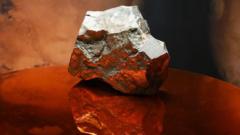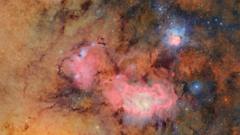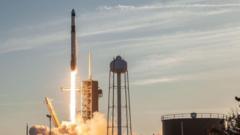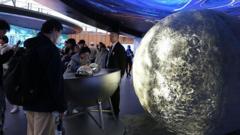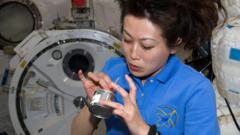NASA's Parker Solar Probe has made history with its closest approach to the Sun, surpassing previous records. On Christmas Eve, the spacecraft executed a daring flyby, enduring extreme temperatures and radiation to gather important data about our solar system.
Parker Solar Probe Achieves Record-Setting Flyby of the Sun
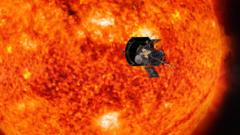
Parker Solar Probe Achieves Record-Setting Flyby of the Sun
NASA's historic mission breaks barriers, approaching within 3.8 million miles of the Sun's surface.
NASA's Parker Solar Probe has etched its name in history by becoming the closest human-made object to the Sun, achieving an astonishing proximity of just 3.8 million miles (6.1 million km) from the solar surface. This monumental event occurred while the probe embarked on its mission on Christmas Eve, where it bravely traversed the Sun's scorching corona - the outer layer of its atmosphere.
Onlookers at NASA held their breath as they awaited confirmation of the probe’s safety after several days of silence during its perilous journey. The signal was successfully received just after midnight, assuring scientists that the Parker Solar Probe was operating normally after withstanding temperatures reaching up to 1,800°F (980°C) and flying at speeds of 430,000 mph (692,000 kph).
NASA’s own Dr. Nicola Fox highlighted the significance of this solar-close encounter, stating, “You can't really experience the atmosphere of our star unless we fly through it.” The Parker Solar Probe has already made 21 solar orbits since its launch in 2018, ensuring that each successive pass gets it closer to the Sun, providing crucial insights into the solar enigma.
Scientists are particularly eager to study the baffling temperature discrepancy between the Sun's surface and its corona. While the surface sits at a relatively modest 6,000°C, the corona reaches millions of degrees, a phenomenon yet to be understood. Astronomer Dr. Jenifer Millard pointed out that the mission’s data could help explain this hot mystery.
Additionally, gathering insights on solar wind – streams of charged particles emitted from the corona – is critical. These particles can create beautiful auroras on Earth but also pose risks to our power systems and technology. Understanding these solar dynamics is crucial for protecting our planet from adverse space weather effects.
As the team anxiously expected a signal during the holiday season, Dr. Fox expressed her calm confidence but admitted the inherent tension tied to such a daring mission. The Parker Solar Probe has undertaken its momentous task with specialized shielding to protect its delicate instruments from the intense environment, proving to be a resilient exploration tool.
This daring feat not only sets records but also paves the way for enhanced understanding of solar phenomena that influence our daily lives, forever changing the narrative of solar exploration.

